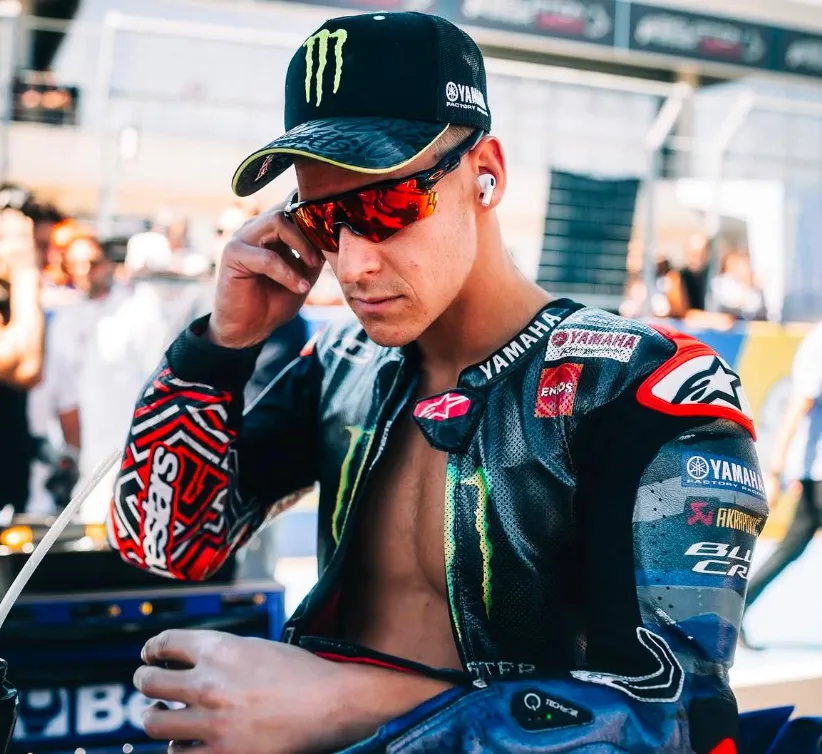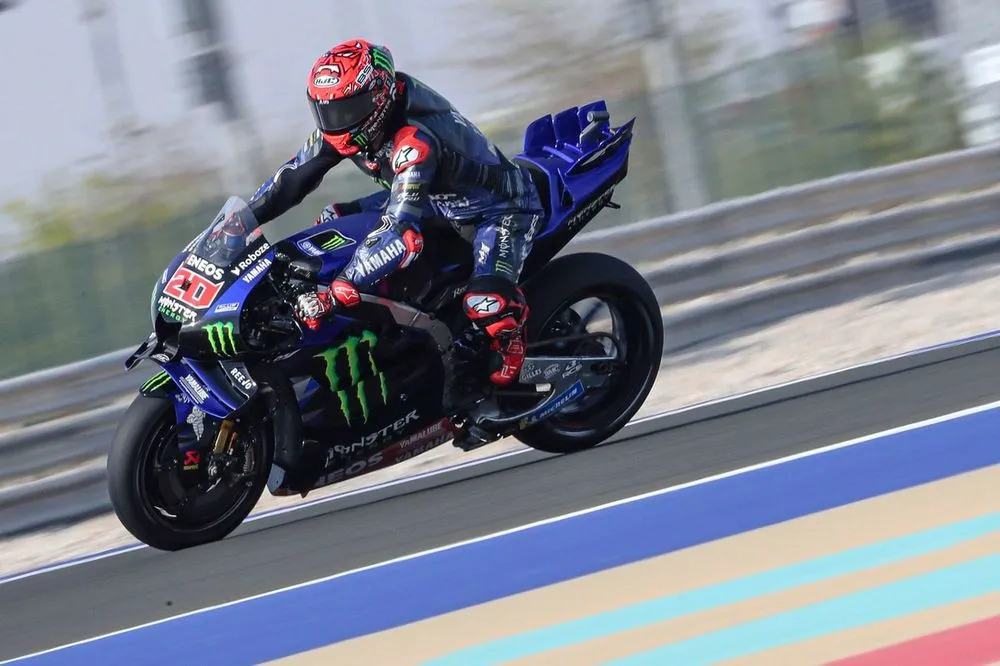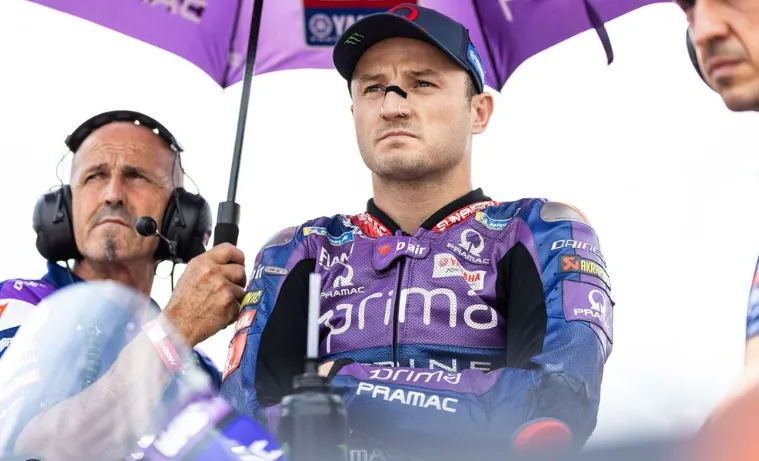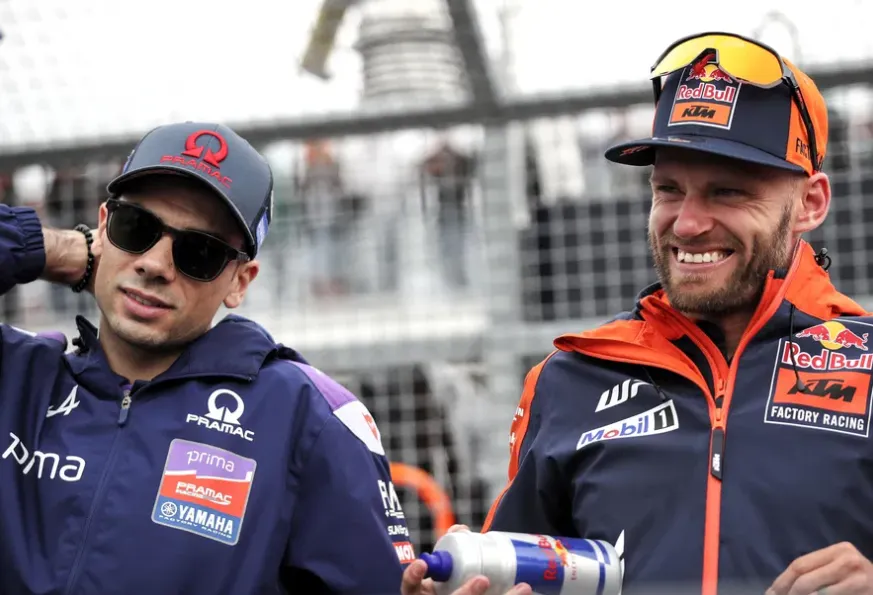

Quartararo Questions Yamaha’s Direction: “No New Ideas, No Progress”
The Hungarian Grand Prix weekend didn’t just bring drama on track for Fabio Quartararo. Away from the heat of competition, the factory Yamaha rider raised eyebrows with candid remarks about the state of Yamaha’s MotoGP project. Speaking openly, the 2021 world champion admitted his growing frustration with the lack of innovation and development from the Japanese manufacturer, questioning whether Yamaha’s traditional inline-four engine concept can still compete against the dominant V4 bikes of Ducati, KTM, Aprilia, and Honda.
Quartararo’s Criticism of Yamaha
Quartararo has long been regarded as Yamaha’s star rider, delivering consistency and championship success despite often facing machinery disadvantages. However, his patience is showing signs of wearing thin.
“I talk to Yamaha every day, I ask them why we don’t try new components, or new ideas,” Quartararo said during the Hungarian round. “We need solutions, it’s a difficult time. I hope they are focusing on the V4 because for the inline four I don’t see anything new.”
His words reflect a broader issue Yamaha has faced for several seasons. While Ducati and KTM continue to push the limits with relentless development and aggressive innovation, Yamaha has often appeared conservative, sticking to its inline-four concept while making only incremental improvements. Quartararo, who thrives on corner speed and precision, has managed to extract the best from the package, but the performance gap to rivals has grown increasingly obvious.

The Inline-Four Debate
At the heart of Quartararo’s criticism lies the question of engine philosophy. Yamaha remains committed to the inline-four configuration, a layout that traditionally delivers smooth power and agility in corners. But in modern MotoGP, the V4 engines used by Ducati, KTM, Aprilia, and Honda offer superior acceleration, top speed, and flexibility in aerodynamics.
Quartararo’s frustration highlights the limitations of the inline-four in an era where raw horsepower and straight-line speed have become critical. The Frenchman’s call for Yamaha to shift focus toward developing a V4 prototype is a clear sign that he believes the current path has reached its limit.
The Need for Innovation
One of the most striking parts of Quartararo’s comments was his suggestion that Yamaha lacks new ideas altogether. In his view, the manufacturer has become too cautious, unwilling to test bold components or radical solutions.
“No new ideas, no progress,” Quartararo implied when describing Yamaha’s approach. While other manufacturers introduce frequent upgrades—whether in aerodynamics, ride-height devices, or chassis innovations—Yamaha’s updates often appear later and less impactful.
For a rider like Quartararo, who is fighting in the most competitive MotoGP grid in history, such stagnation is difficult to accept. The Frenchman’s ability to compete relies heavily on qualifying near the front and riding on the limit, but without machinery capable of matching rivals in acceleration, he is forced to take bigger risks—risks that can lead to mistakes, like the collision in the Hungarian sprint.
Pramac’s Future and the V4
Quartararo also referenced the future of Pramac Racing, now Yamaha’s first-ever satellite team after decades with Ducati. In his view, the team’s long-term success may hinge on Yamaha’s willingness to embrace a V4 engine project.
“The future of Pramac? It would be good to keep Miller’s experience with the V4,” Quartararo remarked, hinting at how valuable Jack Miller’s knowledge of Ducati’s V4 and KTM’s V4 could be if Yamaha decided to make the switch.
This comment underscores the importance of Pramac’s new partnership with Yamaha. As the satellite outfit, Pramac plays a crucial role in testing and development, offering more bikes on the grid to accelerate progress. However, without a competitive base package, even the best satellite structure cannot compensate for shortcomings at the factory level.
A Rider Growing Restless
Quartararo’s frankness is not entirely new. Over the past two seasons, he has occasionally voiced dissatisfaction with Yamaha’s development speed. However, his comments in Hungary stand out for their directness and urgency. They suggest a rider who is not only frustrated but increasingly concerned about his future competitiveness in the sport.
For a world champion of Quartararo’s caliber, fighting merely for points or the lower half of the top ten is far from acceptable. His prime years are now, and he wants Yamaha to match his ambition with machinery that can win.
The Pressure from Rivals
Part of Quartararo’s frustration stems from watching his rivals thrive. Ducati dominates with eight competitive bikes on the grid, all benefiting from cutting-edge V4 technology. KTM has made massive strides in recent years, thanks to an aggressive development plan and heavy investment. Aprilia, too, has transformed itself into a consistent frontrunner. Even Honda, despite current struggles, remains committed to innovating its V4 project.
In this environment, Yamaha risks being left behind if it doesn’t adapt. Quartararo’s words reflect the reality that Yamaha’s traditional strengths—corner speed and agility—are no longer enough to bridge the gap to bikes with superior acceleration and top-end speed.
The Importance of Listening to Riders
MotoGP history shows that successful manufacturers listen to their riders’ feedback and adapt quickly. Riders are the ones pushing the limits, and their insights often point to the crucial changes needed. Quartararo’s demand for new components, new ideas, and even a new engine concept is not just criticism—it’s a plea for Yamaha to act before it’s too late.
If Yamaha fails to respond, it risks not only losing competitiveness but also damaging its relationship with its star rider. Quartararo has been loyal and patient, but every rider has limits. Other manufacturers would undoubtedly be interested in his services if Yamaha cannot provide a bike capable of fighting for wins.
A Crossroads for Yamaha
The comments from Quartararo raise a fundamental question: is Yamaha prepared to evolve, or will it continue to rely on tradition? Developing a V4 engine would be a massive undertaking, requiring years of investment and testing. Yet without such a move, Yamaha may find itself unable to compete at the very top level in the near future.
Pramac’s arrival as a satellite team was supposed to accelerate development. Quartararo’s words suggest that while the structure is there, the ambition still feels lacking. For Yamaha, Hungary may have served as a wake-up call—not just because of on-track incidents, but because its star rider is sending a clear message.
Conclusion
Fabio Quartararo’s criticism of Yamaha during the Hungarian Grand Prix weekend has sparked serious debate about the manufacturer’s future direction. By questioning the lack of innovation, pointing to the limitations of the inline-four, and even urging a potential shift toward a V4 engine project, Quartararo has made it clear that patience is running out.
His remarks about Pramac Racing and the value of Miller’s V4 experience underline just how urgent the issue has become. For Yamaha, the time for small steps may be over. To keep Quartararo motivated—and to stay relevant in the modern MotoGP era—it may need to embrace bold, transformative decisions.



















